A misunderstood marvel
Among Saab’s many experimental projects, few stir as much fascination—and confusion—as the Saab 900 Speeder. Frequently mislabeled as the “Speedster” and dated inconsistently to either 1984 or 1986, the car’s true history has been blurred by decades of retellings. Yet this single prototype embodies both the innovative daring of Saab’s design department and the eccentric craftsmanship of Sweden’s most unconventional coachbuilder.
The story of the Speeder spans two nations—Sweden and France—and nearly four decades. From its conception in Trollhättan and Stockholm, through its promotional career in Paris, to its long residence in Bayonne and eventual transfer to a private Parisian collection, the Speeder remains one of the most enigmatic and important Saab prototypes ever built.
This vehicle, which stands out as a modern marvel even today, originated from a series of unconventional design projects in the mid-1980s. Envall, eager to prove his innovative prowess after Saab’s decision to use Ital Design and Giugiaro for the Saab 9000, teamed up with Mellberg to create the Saab EV-1, a supercar based on the 900 Turbo. The Speeder was their next ambitious project, a prototype convertible that would challenge automotive conventions and captivate enthusiasts.
A clash of dates – 1984 or 1986?
One of the most persistent points of confusion is the date of the Speeder’s creation.
- Some sources, such as SaabPlanet’s early article (2015) and Graphikdesigns, place the birth of the project in 1984. These references likely capture the initial design and build phase, when Mellberg began cutting into a Saab 900 Turbo-16 shell and experimenting with new body lines.
- Others, including Carjager, Saabclub.be, and most authoritatively Teknikens Värld, identify 1986 as the year of its public unveiling and road testing.
The best interpretation is that 1984 marks the start of construction, while 1986 represents the moment when the Speeder became a finished prototype and entered the public eye. This duality explains why different enthusiasts and journalists cite different years—both are correct, depending on whether one refers to its gestation or its debut.
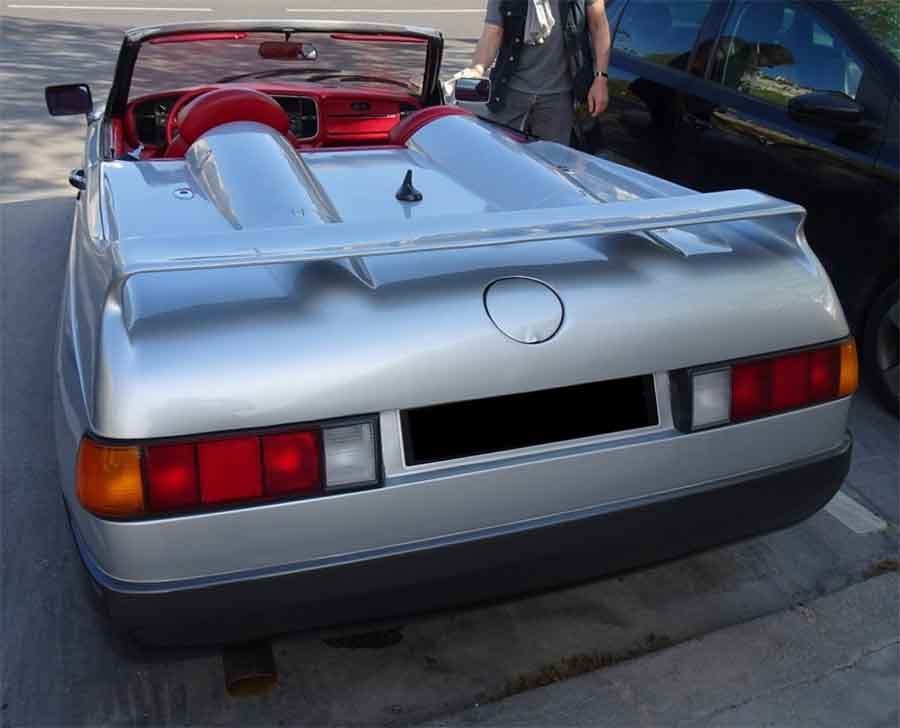
The rear view of the Saab 900 Speeder, highlighting its aerodynamic design with dual humps behind the seats and a stylish rear spoiler, accentuating the prototype’s sporty and unique character.
Why “Speeder,” not “Speedster”
Another widespread misconception is the car’s name. In French and English sources it is often called the Saab 900 Speedster, a term borrowed from Porsche and evocative of lightweight open sports cars.
However, the authentic name is Speeder. On Saabclub.be, Gunter Van Oost makes clear that speeder in Swedish refers to a “snelheidsduivel”—a speed devil, someone who drives fast. It was a tongue-in-cheek nod from Saab’s designers and coachbuilder to their intent: to build the fastest, most radical Saab convertible imaginable.
Thus, while “Speedster” became the popular misnomer in international press, Speeder is the correct and original name.
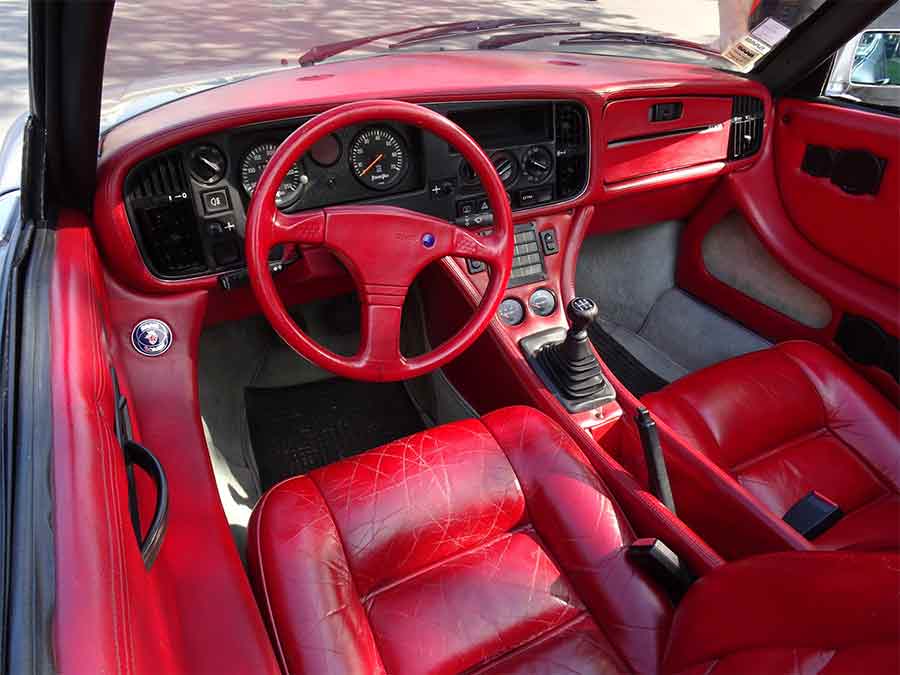
The Envall–Mellberg duo: vision and rebellion
The Speeder was not the work of Saab’s corporate design studio but rather of Björn Envall, Saab’s design director, and Leif Mellberg, Sweden’s most eccentric coachbuilder.
- Envall, having seen his ego bruised when Saab turned to Italdesign and Giorgetto Giugiaro for the 9000 project, wanted to prove his design relevance.
- Mellberg had already earned notoriety for creating a Saab six-wheeler, a gullwing-door Saab, and would later craft the Saab Targa convertible prototype now displayed at the Saab Museum.
Their first collaboration produced the dramatic EV-1 (1985), a futuristic show car that even made a cameo in Back to the Future. Emboldened, they embarked on a second, even wilder creation: the Saab 900 Speeder.
When Saab management dismissed the proposal as “too crazy,” the pair secured 500,000 SEK in funding from the Swedish car magazine Teknikens Värld, which agreed to sponsor the build as one of its high-profile experimental projects.
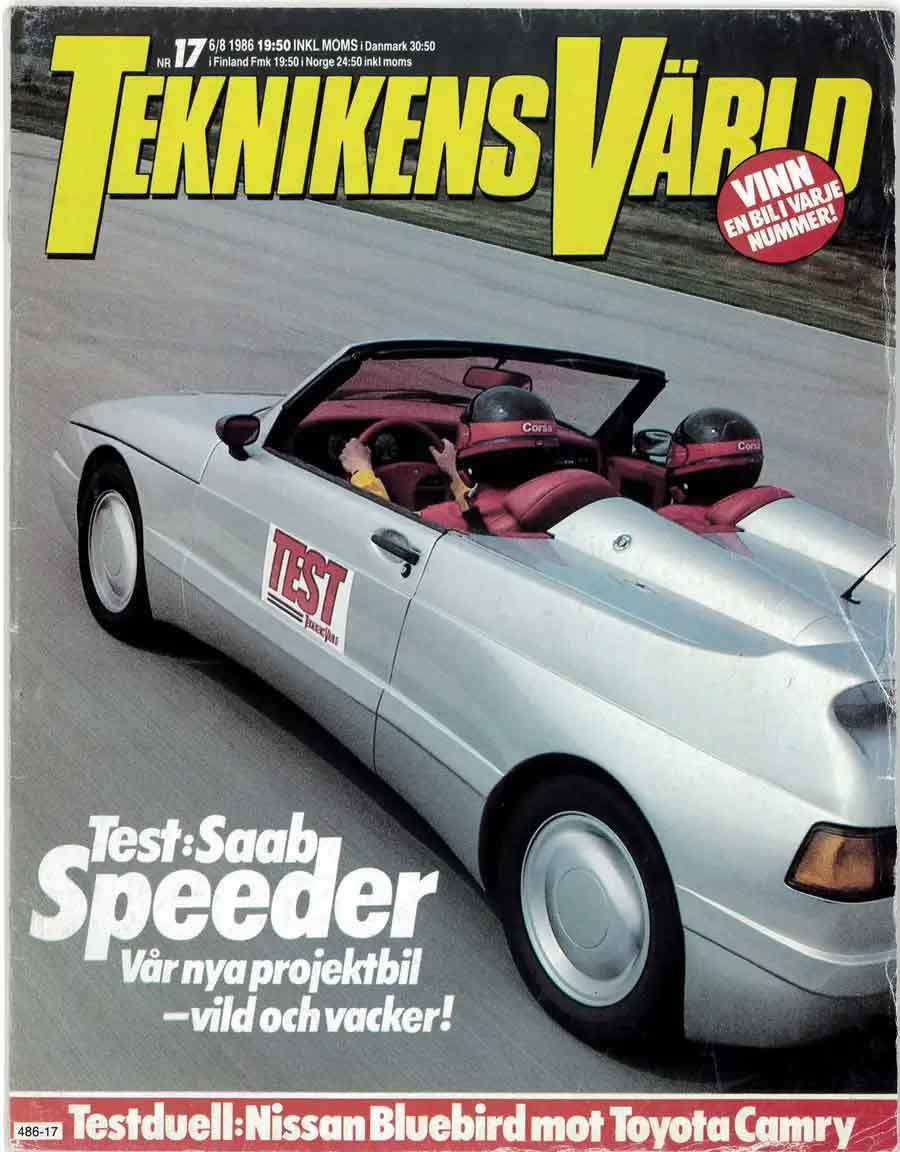
Steel, turbo, and red leather – building the Speeder
Constructed on a shortened Saab 900 Turbo-16 chassis, the Speeder bore little resemblance to the production 900. Mellberg reshaped the car completely:
- The body was hand-formed in steel, a testament to traditional craftsmanship.
- Its most striking feature: twin aerodynamic humps behind the seats, inspired by the Mercedes 300 SLR racing roadsters of the 1950s.
- The rear light units evoked the BMW E21 3-Series, giving the car an exotic look unlike any Saab before or after.
- The interior was swathed entirely in red leather, with a futuristic control panel often likened to the dashboard of KITT from Knight Rider.
Under the hood, Mellberg heavily modified the 2.0-liter turbocharged engine:
- fitted with a larger turbocharger,
- upgraded injection system controlled by Saab’s infamous Red Box,
- outputting around 250 horsepower—a huge leap from the stock 175 hp.
During its test sessions with Teknikens Värld, the Speeder delivered blistering results:
- 0–100 km/h in 7.1 seconds,
- 235 km/h top speed, though the car was still accelerating when the 2.6 km runway ran out,
- fuel consumption under hard driving: 20 l/100 km,
- ventilated front brake discs, highly advanced for Saab in the mid-1980s.
By comparison, a Porsche 911 Cabriolet of the same era managed 0–100 in 6.1 seconds and 245 km/h. The Porsche was quicker, but the Speeder’s radical looks and exclusivity gave it a different kind of allure.
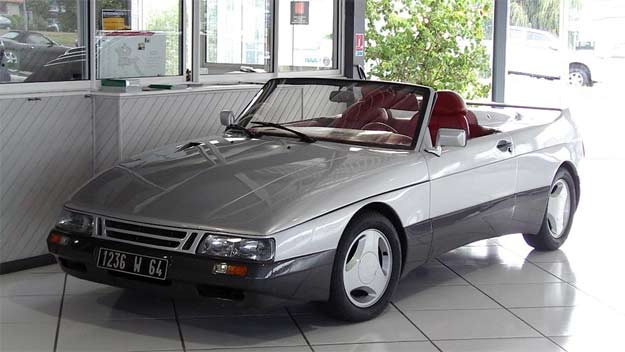
Saab France steps in
The Speeder might have remained a quirky Swedish experiment, but fate intervened. At its presentation in Stockholm, the director of Saab France was captivated. Recognizing its promotional potential, Saab France purchased the prototype and shipped it to Paris.
Claude Makowski, deputy director of Saab France at the time, personally collected the car at the port. He recalled how the sight of the low, wide Saab drew stares—even though the turbo was already malfunctioning.
Over the following years, the Speeder became a marketing mascot for Saab France:
- It appeared at dealer conventions, trade fairs, and promotional stands.
- French automotive media covered it extensively, often portraying it as an “official French Saab prototype.”
- From 1986 to 1991, it embodied the message Saab wanted to send in France: different, innovative, and not afraid to challenge convention.
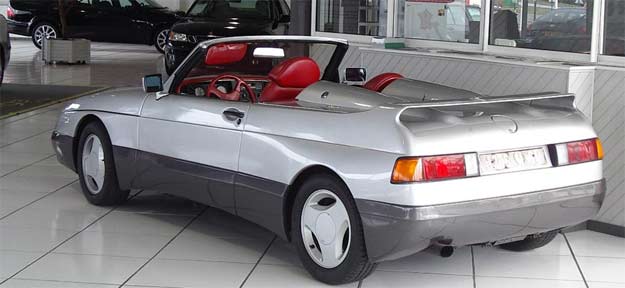
From Paris to Bayonne – Vincent Villanueva
By 1991, Saab France decided to part with the prototype. It was sold through the specialist press for 300,000 French francs to Vincent Villanueva, a long-time Saab dealer and former rally driver from Bayonne in the French Basque Country.
Villanueva had run one of France’s oldest Saab dealerships since the 1960s, and his career as a rally driver made him a local automotive legend. His showroom in Bayonne became home to the Speeder.
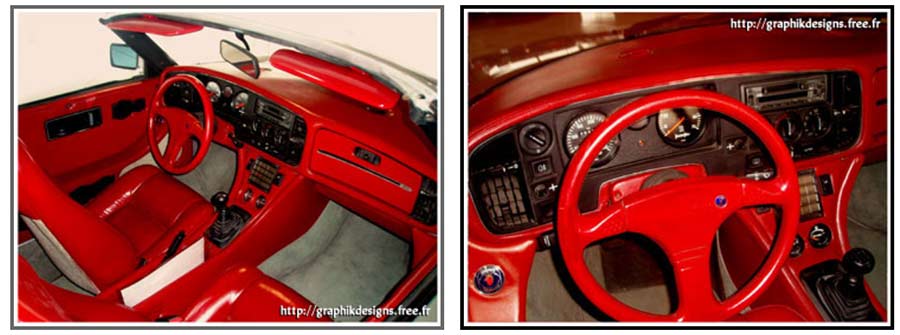
Photo courtesy of Mr. Villanueva (Saab Bayonne)
Some key facts from this era:
- The original paperwork that described the Speeder as a modified Saab 900 was lost between Paris and Bayonne. As a result, the car could only be legally driven on “W” dealer plates (plaque garage).
- Villanueva occasionally drove the Speeder on pleasure outings in the Basque region but mostly kept it on display in his showroom.
- By 2007, the car had accumulated ~48,000 km, and by 2014 around 50,000 km.
- Numerous wealthy collectors from France and Spain tried to buy it, often offering tens of thousands of euros, but Villanueva consistently refused.
The car became a fixture in Bayonne, cherished by the Villanueva family and admired by Saab enthusiasts who made pilgrimages to see it in person.
A new chapter – into private Parisian hands
After nearly three decades in Bayonne, the Speeder’s story took a final turn. In 2018, the Villanueva family decided to part with the prototype. It was sold to a private Saab collector in the Paris region, where it remains today.
Since then, the Speeder has not been seen publicly. Its whereabouts are known only within Saab’s inner enthusiast circles, adding to the aura of mystery that already surrounded it.
Legacy of the Saab 900 Speeder
The Saab 900 Speeder is more than a one-off prototype; it is a microcosm of Saab’s spirit:
- Ingenuity: created outside official channels yet directly tied to Saab’s design leadership.
- Performance: a 250 hp turbo monster at a time when Saab was still considered quirky rather than fast.
- Design daring: with its steel body, red leather interior, and twin humps, it challenged the conventions of 1980s automotive design.
- Cultural significance: first in Sweden as a Teknikens Värld show car, later in France as Saab’s marketing weapon, and finally as a cherished dealer mascot in Bayonne.
Though often misnamed and misdated, the truth of the Speeder is now clear: it began life in 1984, debuted publicly in 1986, and remains a singular creation with no equals in Saab’s history.
References
- SaabPlanet – early Speeder article
- Carjager – Saab 900 Speeder in Bayonne
- Saabclub.be – detailed Speeder history
- Teknikens Värld – 1986 test
- Graphikdesigns – Villanueva’s story


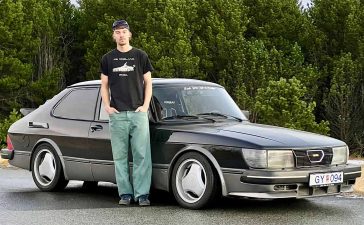

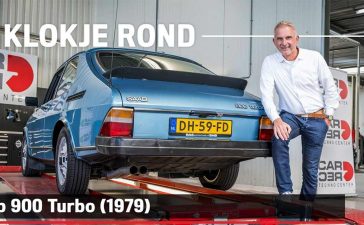
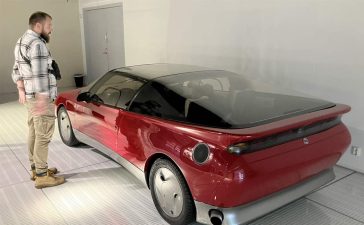

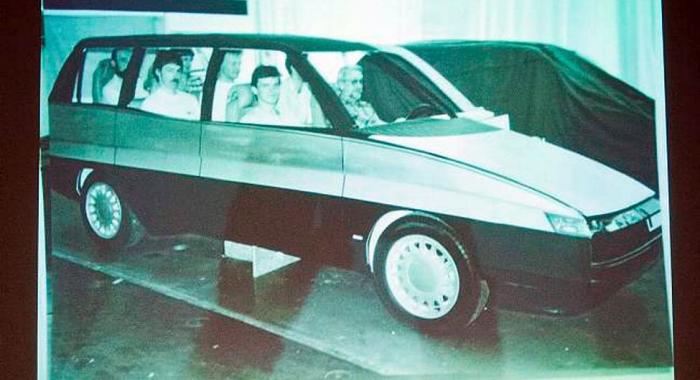




Synd att saab inte tillverkas mer. Sveriges eller kanske världens bästa bil